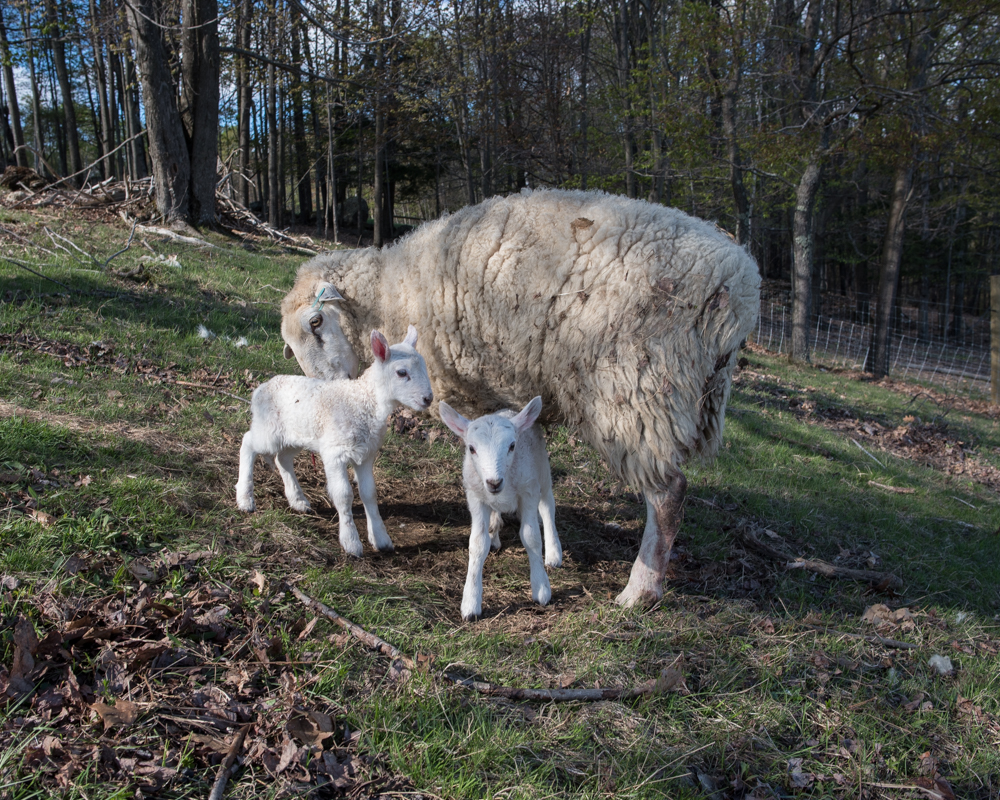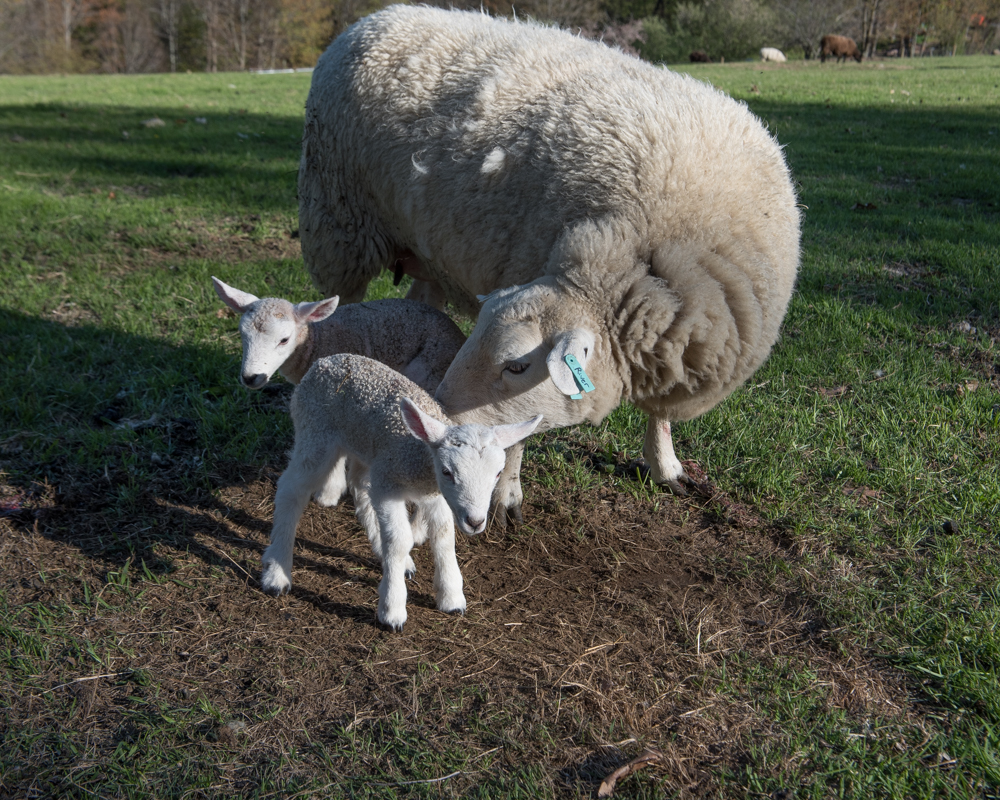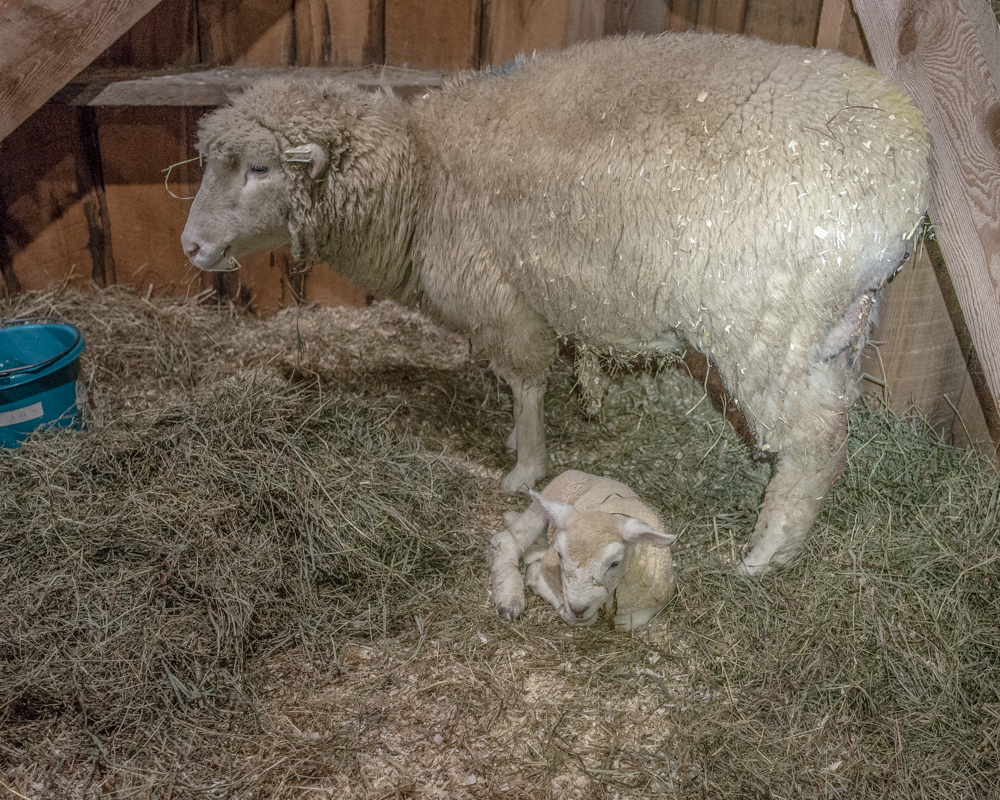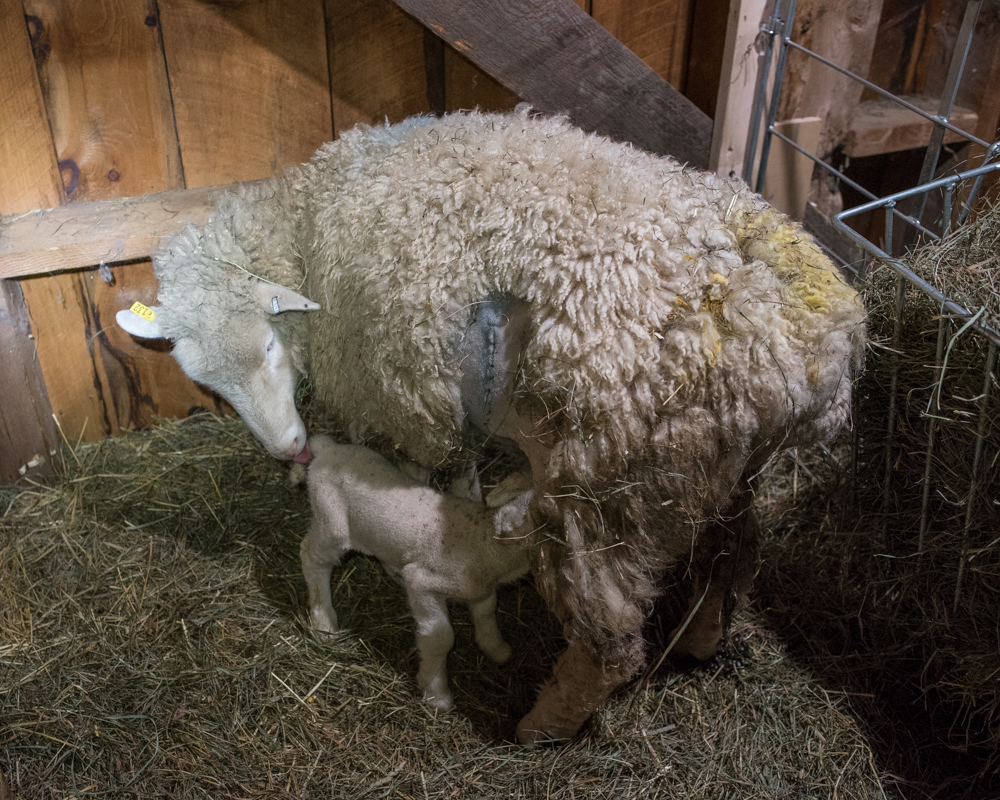Today the last of the pregnant ewes gave birth to twins. It seemed fitting that my first and last lambs were black.
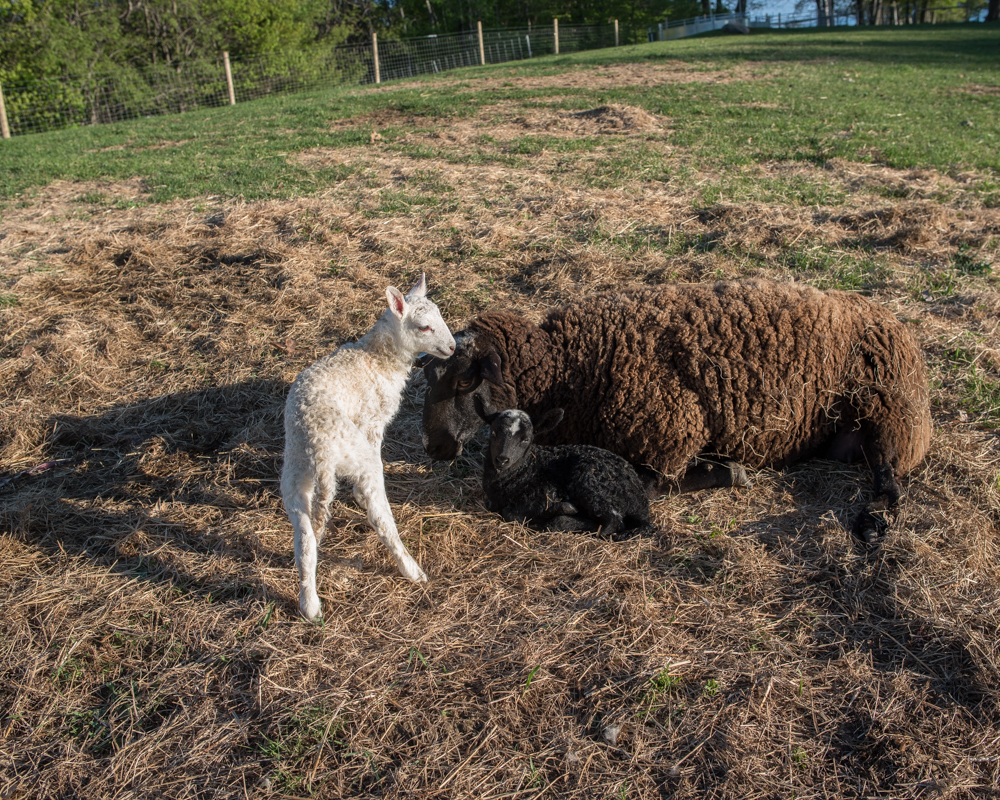 Now that lambing is over for 2017 (barring mystical events), here’s a first pass at documenting what happened.
Now that lambing is over for 2017 (barring mystical events), here’s a first pass at documenting what happened.
- Of my 27 adult ewes and one ewe lamb, 24 gave birth; 4 ewes didn’t get pregnant for some reason.
- 36 lambs were born between 3 February and 20 May, and 30 are still alive.
- There were 2 sets of triplets, 8 sets of twins, and 14 singles, a “lambing rate” of 150% (where 100% is all singles and 200% is all twins). Many shepherds try for a lambing rate of 185%, hoping for as many twins as possible with few or no triplets (who are more likely to die of something or other).
- Of the lambs who died, 2 were eaten by Bravo, 1 died after a complicated labor and C-section, 2 died of hypothermia in a May snowstorm, and one died from a combination of cold and maternal abandonment
- My lambing mortality rate was a bit under 17%, while the national average is about 15%. I think 4 of the deaths (the Bravo victims and the hypothermic twins) were ultimately attributable to my inexperience and bad decisions, so if I were an optimal shepherd, my mortality rate might have been as low as 6%.
- The 6 winter lambs were sired by a Texel ram. Of the 8 lambs whose sex I could identify, 4 were female and 4 were male.
- The spring lambs, sired by my border cheviot ram, were 18 females and 6 males. I’m not sure that either group is large enough to draw any statistically meaningful conclusions, but one tempting explanation is that the ram influences the sex ratio of the offspring. I’m very curious if this is borne out with the cheviot’s offspring next year.
Tagged: black lamb, Border Cheviot, dorper, ewes, Hollow Oak Farm, lambs, last lambs, newborn, north country cheviot, statistics, twins
